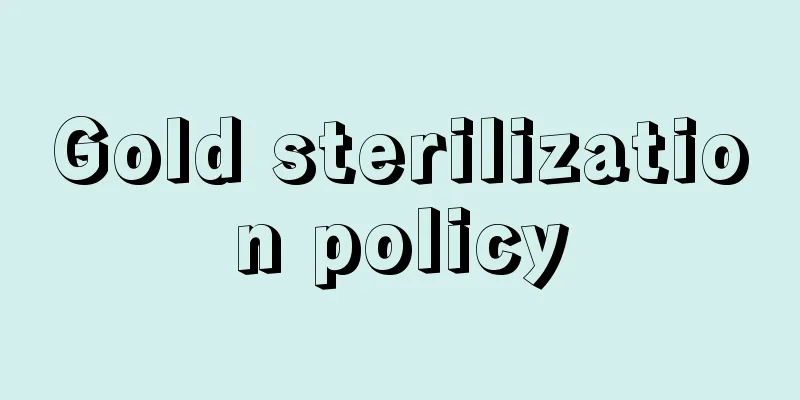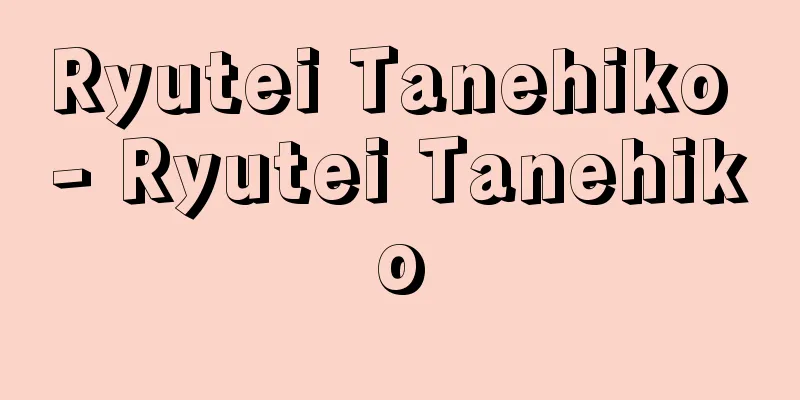Gold sterilization policy

|
This refers to a policy taken to prevent a large amount of gold from flowing in from abroad from increasing the amount of currency issued in the country and causing inflation. Under the gold standard, the "rules of the game" that monetary authorities had to follow in such cases were to promote the process in which the inflationary effect of an increase in currency issuance would change the price competitiveness of traded goods, reduce the balance of payments surplus, and move toward equilibrium. Sterilization of gold is when this rule is intentionally violated and the previous relationship between all or part of the inflow of gold and the amount of currency issued is severed. A notable example of this can be seen in the United States between the two world wars. First, when a huge amount of gold flowed into the United States in the early 1920s, the authorities restrained the increase in the issuance of currency by issuing gold certificates and conducting sales operations of government securities. Later, in the late 1930s, short-term funds known as hot money flowed into the United States, but the authorities tried to avoid an increase in the issuance of currency by raising the reserve ratio of commercial banks and sterilizing part of the inflows by retaining them in a special account of the Treasury Department called an "inactive account." The purpose of this was to prevent the spread of credit inflation and to avoid the sudden deflationary effect when funds that had once flowed in flow out again in the future. However, this kind of gold sterilization would hinder the adjustment of imbalances in the balance of payments, force deficit countries to use up their gold reserves, and pressure them into implementing severe deflationary policies and devaluations. In other words, it would result in the burden of adjusting the balance of payments being placed solely on the deficit countries. [Hara Makoto] "International Currency: Theory and Reality in the 20th Century" by R. Nurkse, translated by Kiyoshi Kojima and Takashi Murano (1953, Toyo Keizai Shinposha) [Reference item] |Source: Shogakukan Encyclopedia Nipponica About Encyclopedia Nipponica Information | Legend |
|
金が大量に外国から流入した場合、それが国内の通貨発行量を増大させ、インフレーションを巻き起こすのを阻止するためにとられる政策をいう。金本位制のもとでは、このような場合、通貨増発によるインフレーション効果を通じて、貿易商品の価格競争力が変化し、国際収支の黒字が減少し、均衡に向かうという過程を促進させることが、通貨当局の守るべき「ゲームのルール」とされていた。このルールを意図的に守らず、流入した金の全部または一部と通貨発行量との従来の関係を遮断してしまうのが金の不胎化である。 その顕著な例は両大戦間のアメリカにみられる。まず、1920年代前半にアメリカに巨額の金が流入した際には、当局は金証券を発行したり、政府証券の売りオペレーションなどにより、通貨の増発を抑制した。その後1930年代後半にも、ホット・マネーといわれる短期資金がアメリカに流入したが、当局は商業銀行の支払準備率の引上げを行い、また流入金の一部を「不活動資金」inactive accountという財務省の特別勘定に保留して不胎化することにより通貨の増発を避けようとした。その目的は、信用インフレーションの拡大を防ぐこと、およびいったん流入した資金が将来また流出するときの急激なデフレーション効果を避けようとしたものであった。 しかし、このような金不胎化は、国際収支の不均衡の調整を妨げ、赤字国に対しその金準備を消尽させ、厳しいデフレーション政策や平価切下げの実行を迫ることになる。すなわち、国際収支調整の負担を赤字国側だけに押し付ける結果となるのである。 [原 信] 『R・ヌルクセ著、小島清・村野孝訳『国際通貨――20世紀の理論と現実』(1953・東洋経済新報社)』 [参照項目] |出典 小学館 日本大百科全書(ニッポニカ)日本大百科全書(ニッポニカ)について 情報 | 凡例 |
Recommend
Aviation accident - koukujiko
This refers to damage to persons or property caus...
Shigenari Ohtaka
Year of death: Jōji 1/Shohei 17 (1362) Year of bir...
Steppe Climate
It is the second driest climate (Köppen's BS ...
Damas, L. (English spelling) DamasL
...This trend eventually sparked a rebellion amon...
Agricultural infrastructure development
This refers to the planned development of the agri...
Alger (English spelling)
The capital of Algeria in North Africa. It is the...
Coryphaenoidea
...General term for marine fish of the family Cor...
flannel
In Japan, it is also called flannel for short. A t...
Underground network - Jigeami
〘Noun〙 (from the meaning of a net shared by the vi...
Liquid oxygen explosives - explosives
Also known as liquid oxygen explosive. An explosiv...
Chiara, G. (English spelling) ChiaraG
…His real name was Giuseppe Chiara. He was an Ita...
Big Blue Tongue Lizard - Big Blue Tongue Lizard
… [Classification] The Skink family is a large gr...
Villoldo, A. (English spelling) VilloldoA
...Also, the influence of the Italian immigrants ...
Restaurant - inshokuten
〘 noun 〙 A place where customers can eat cooked fo...
Murata [town] - Murata
A town in Shibata County in southern Miyagi Prefec...









